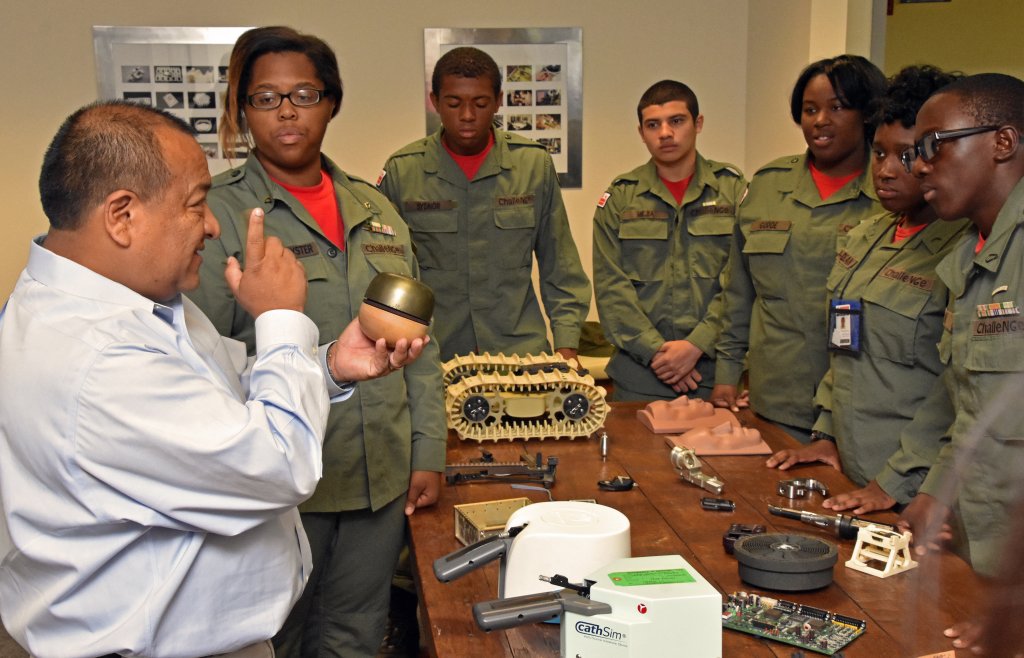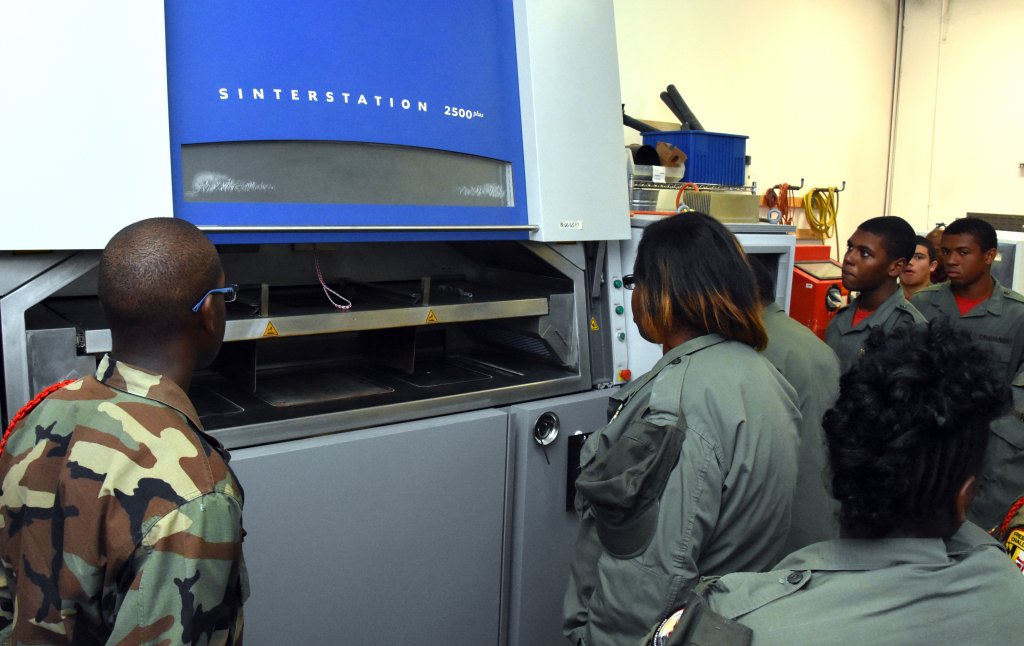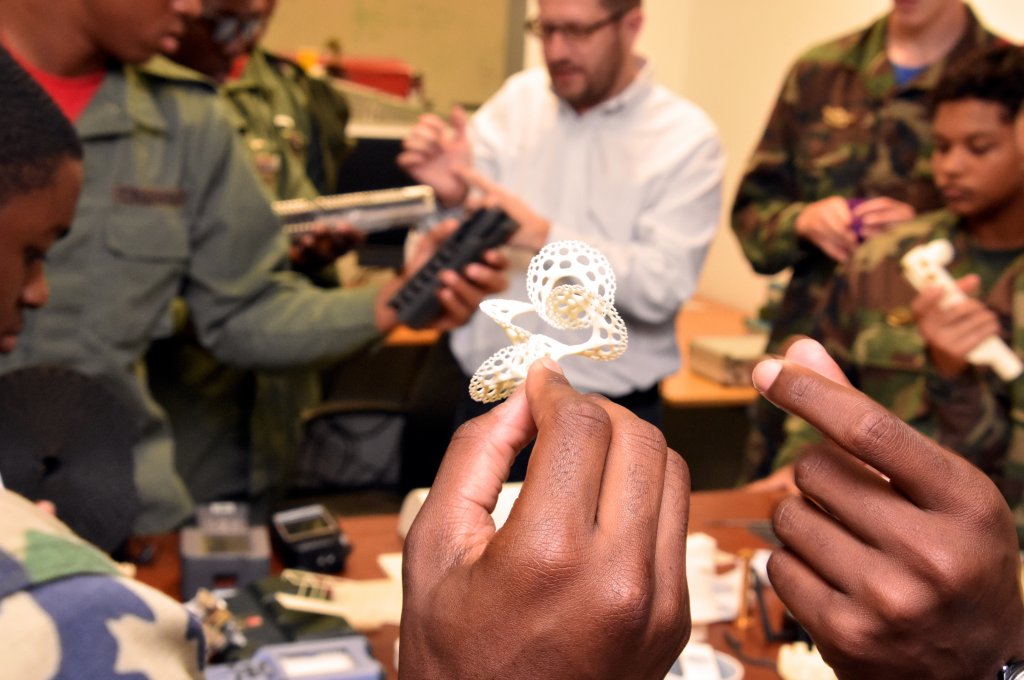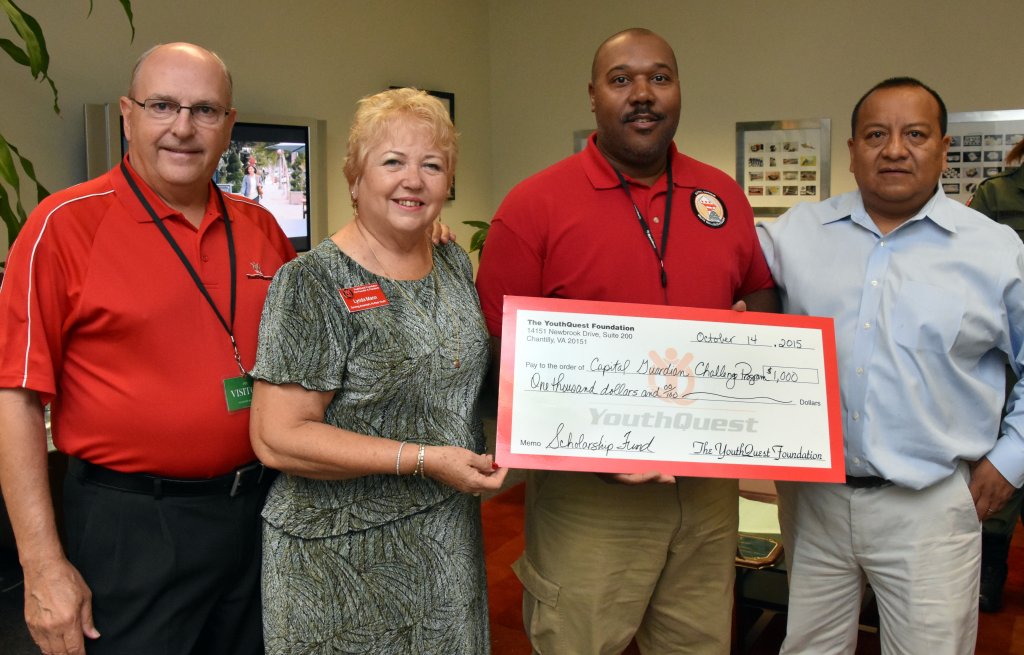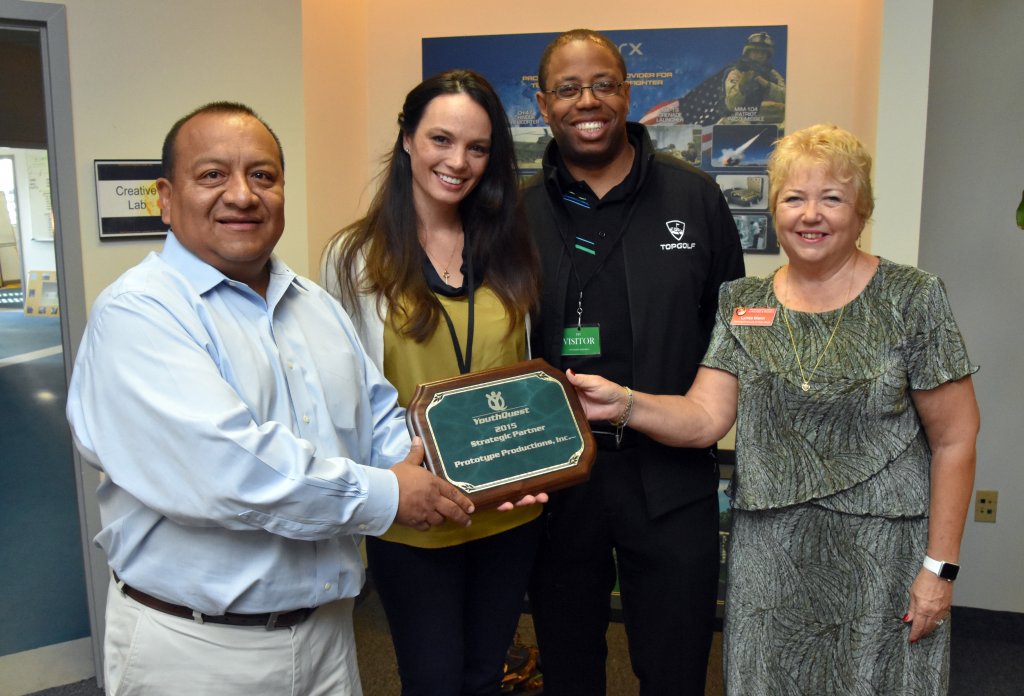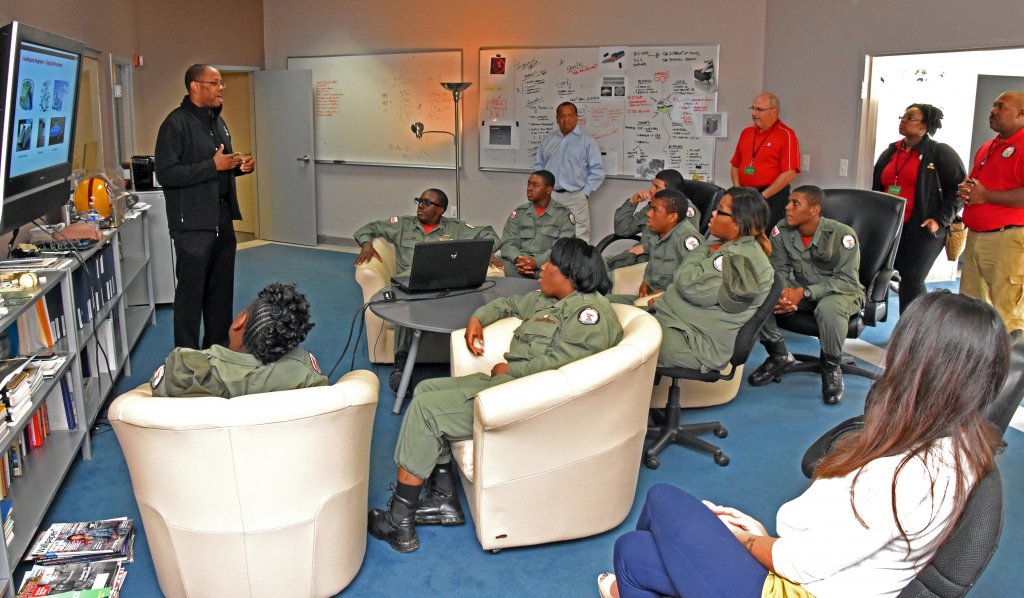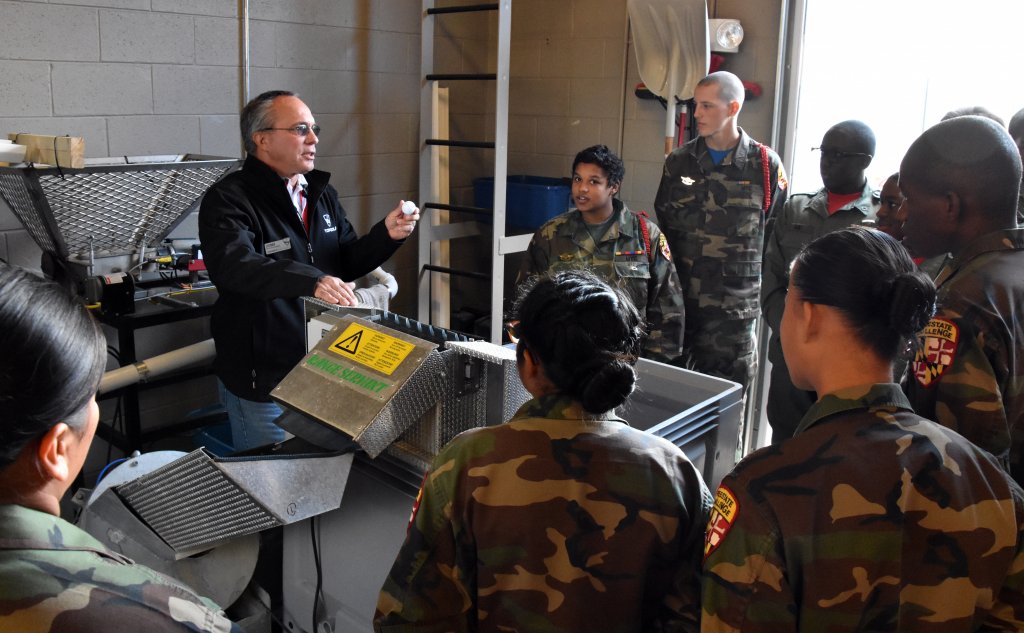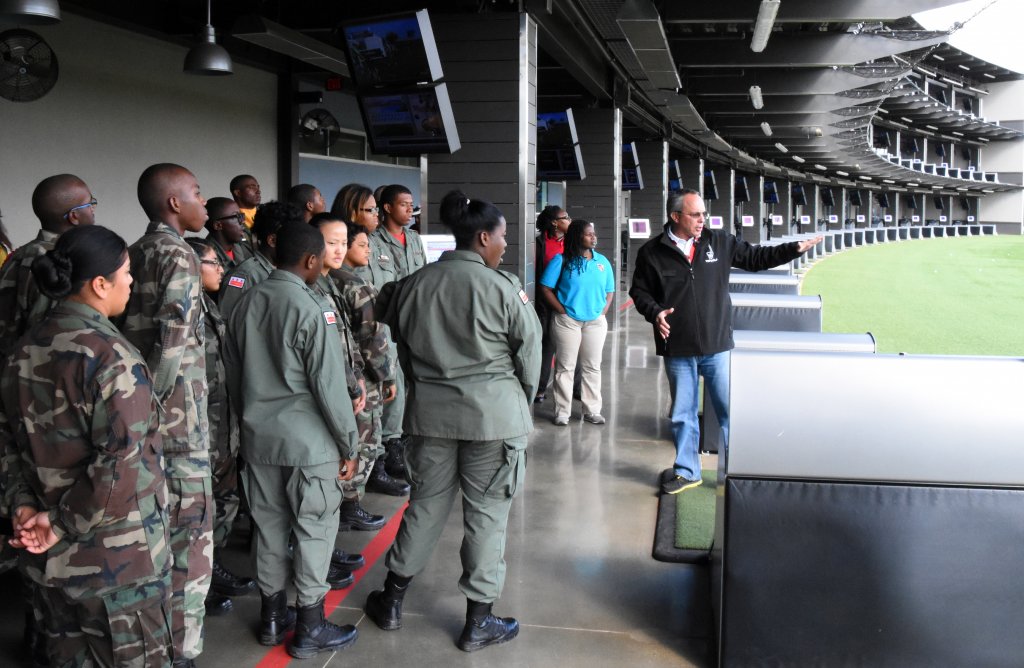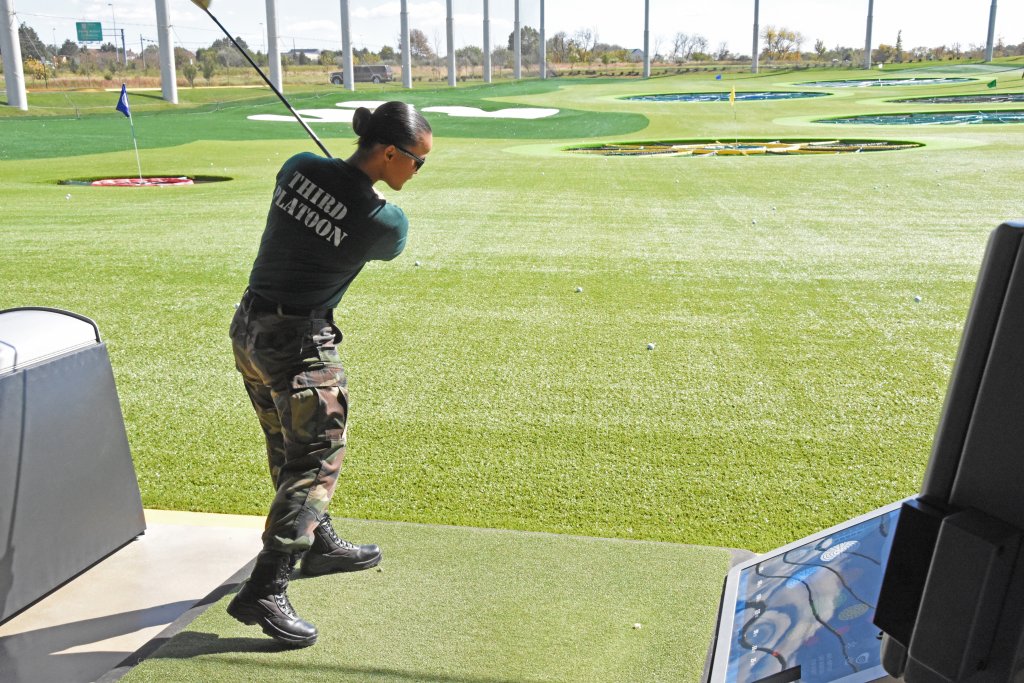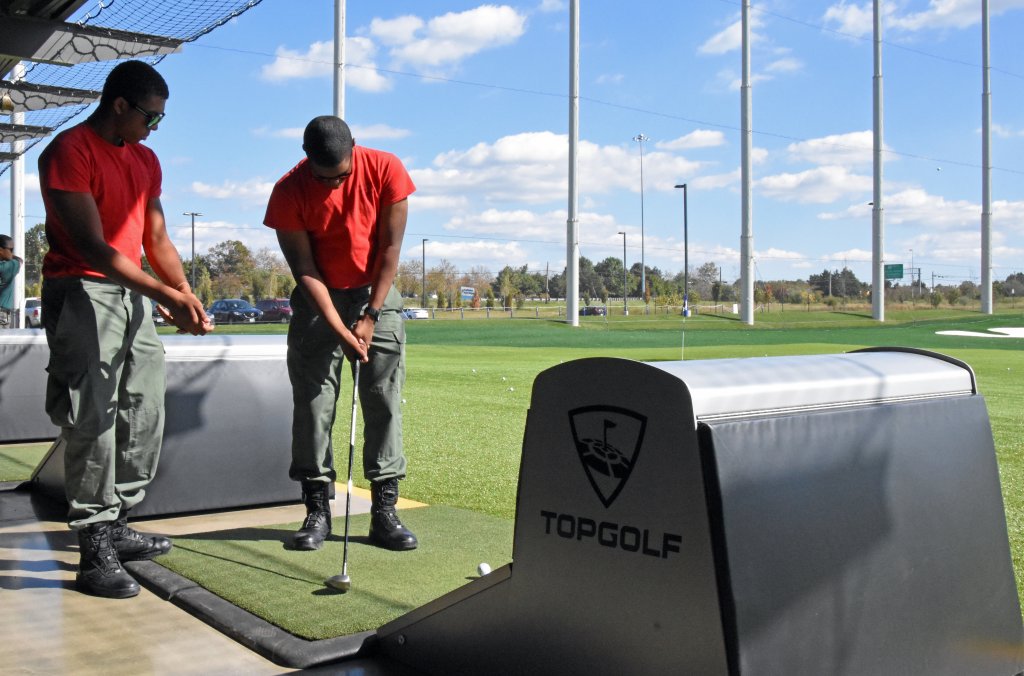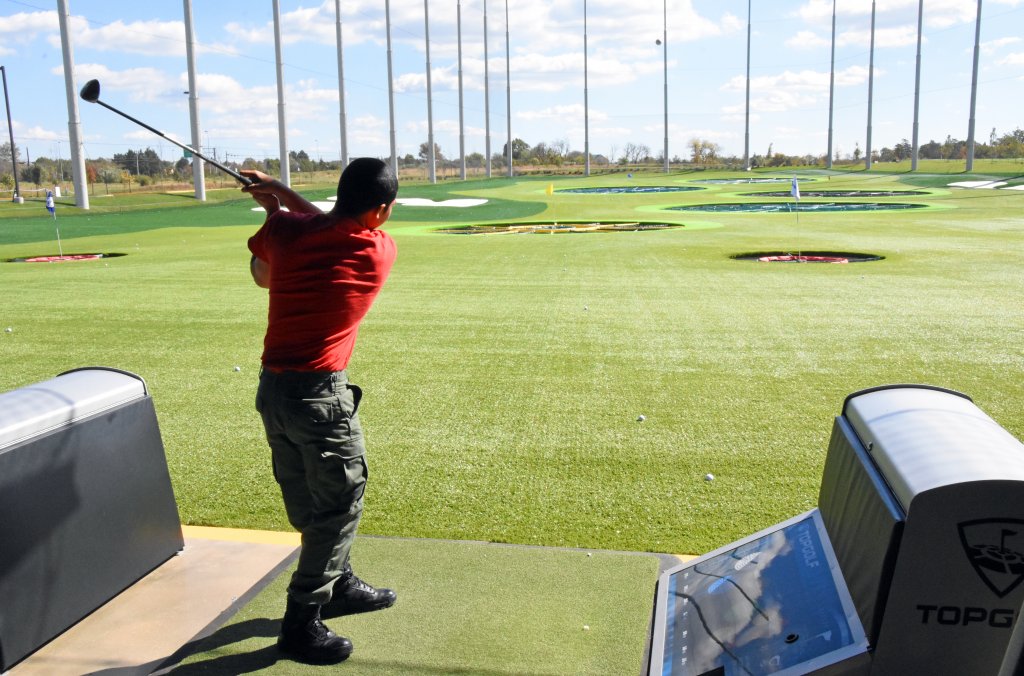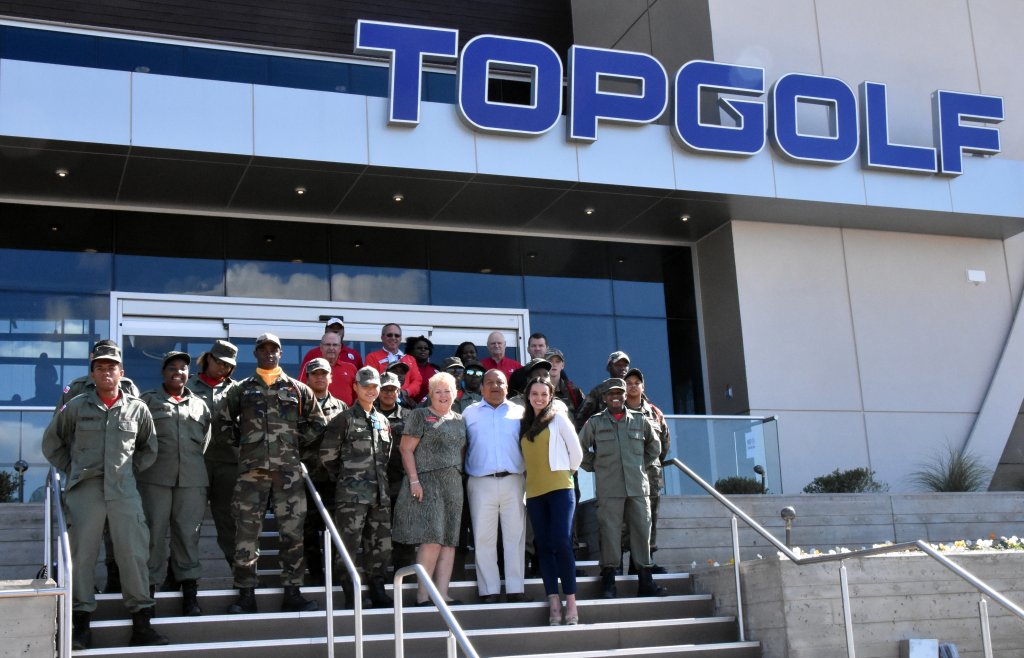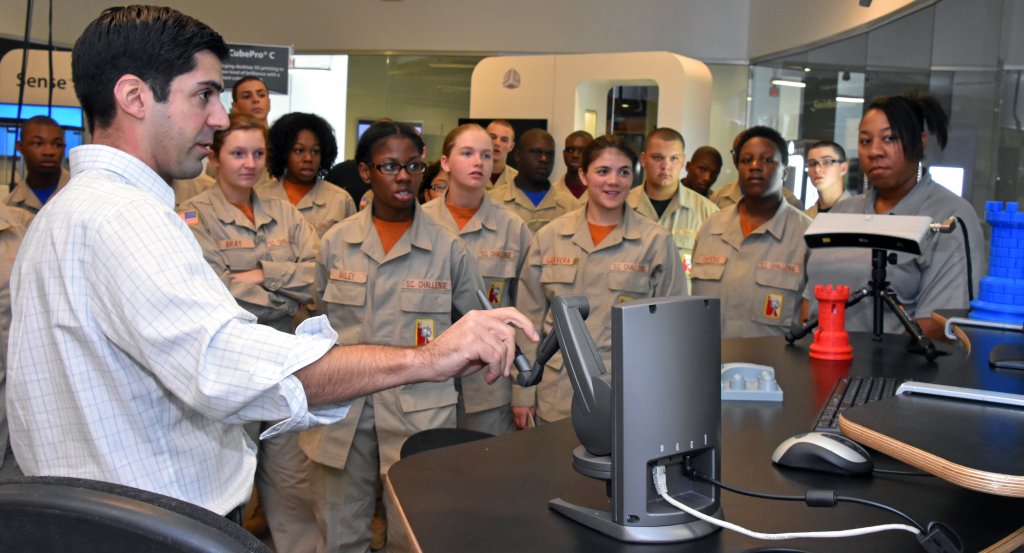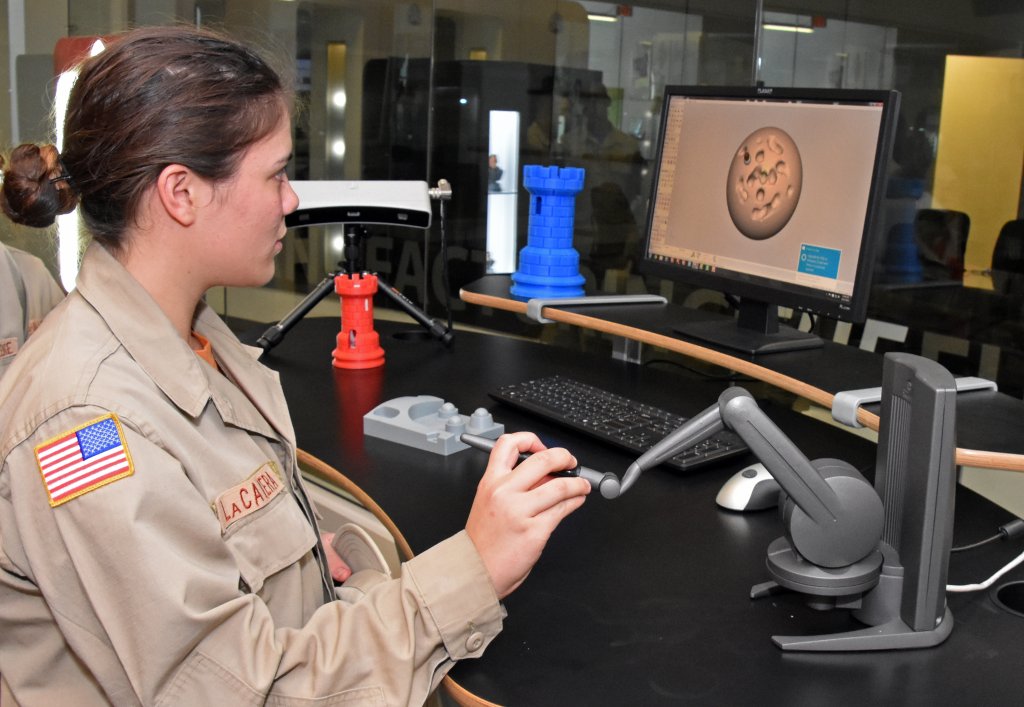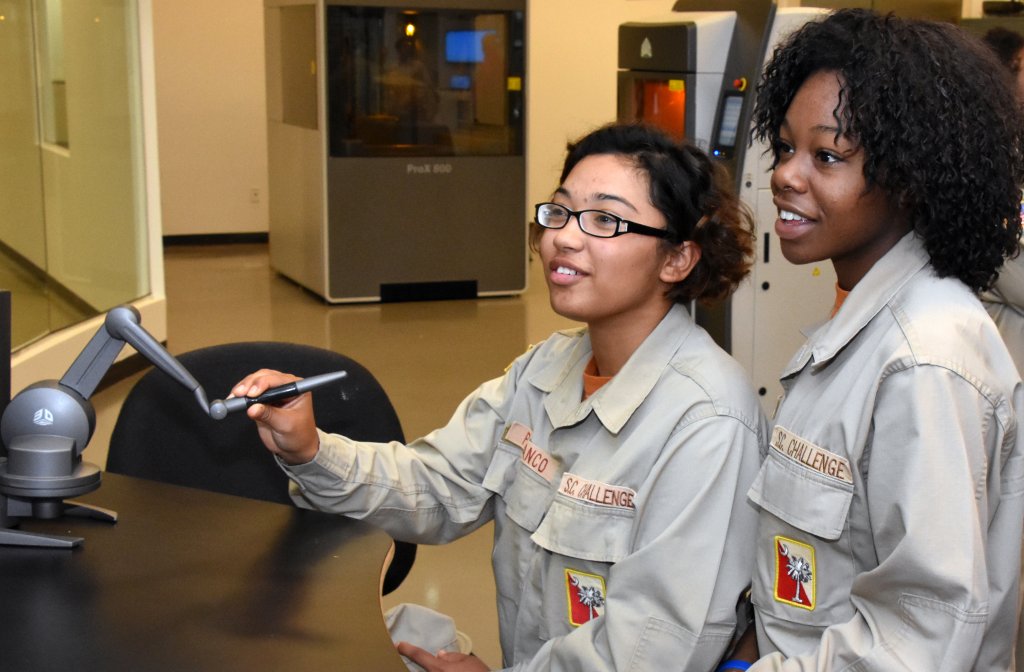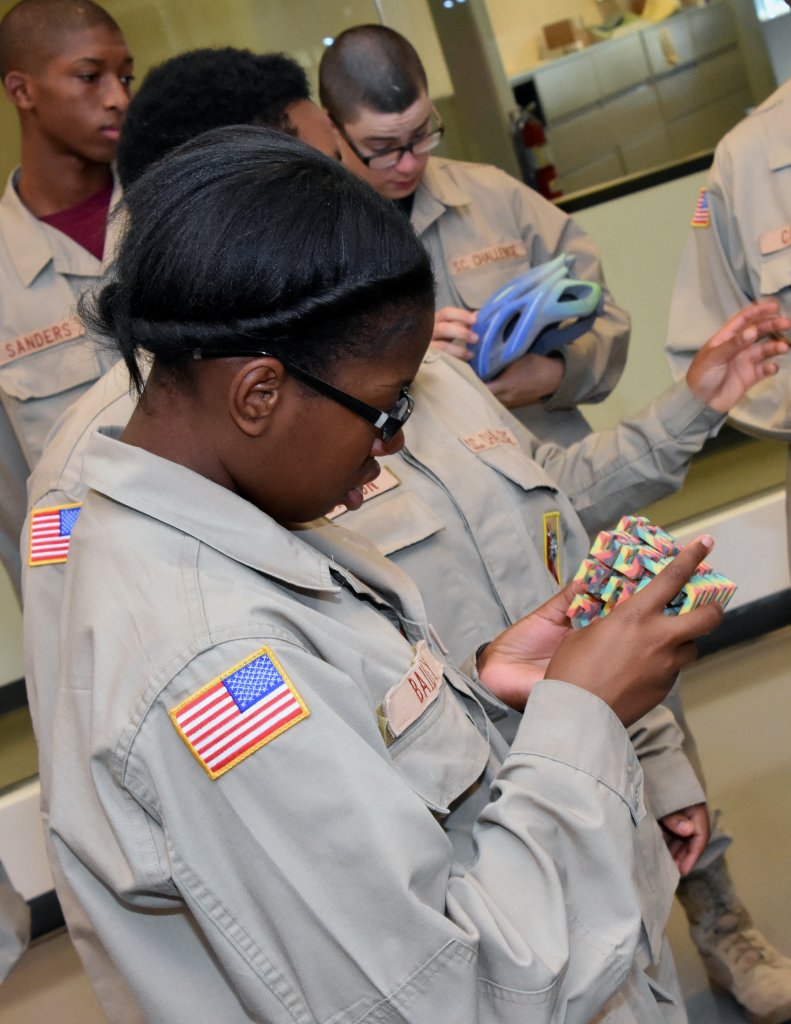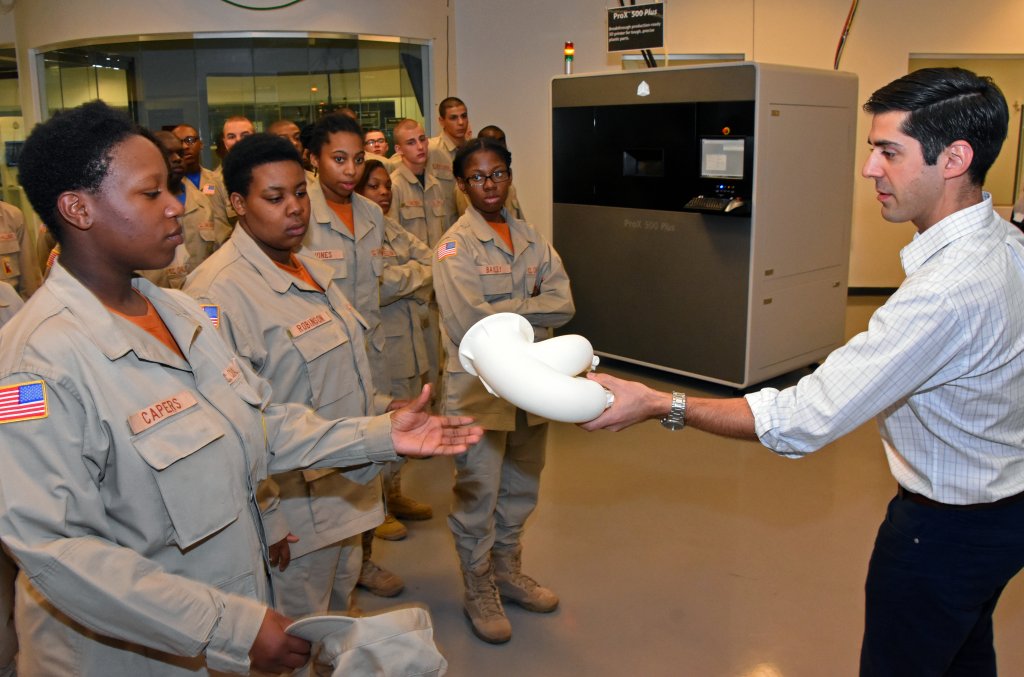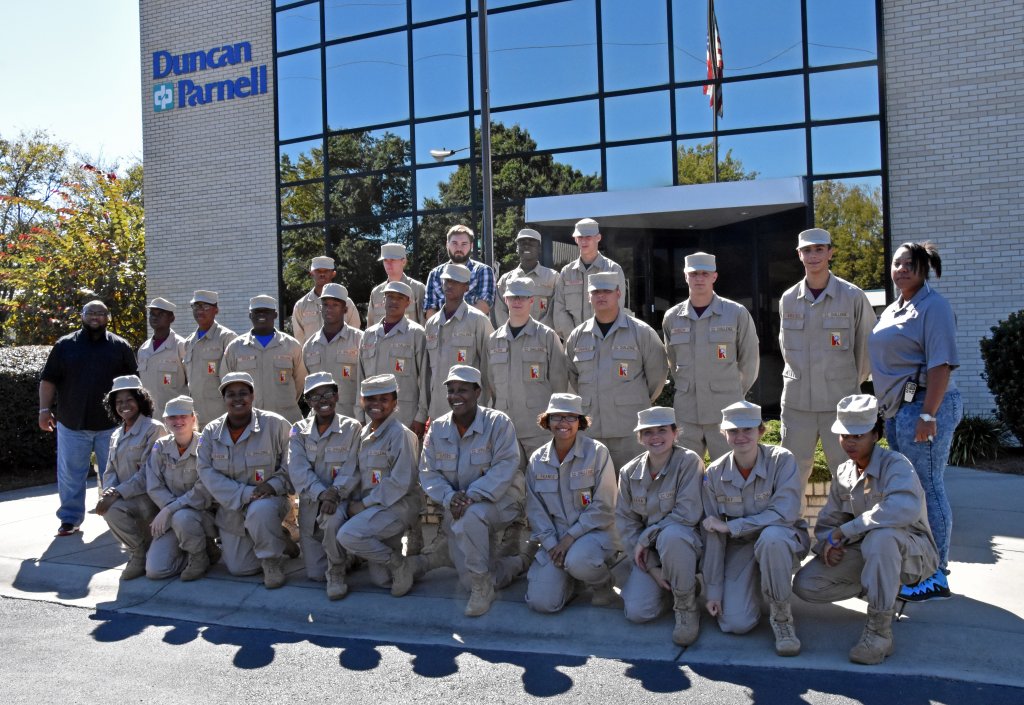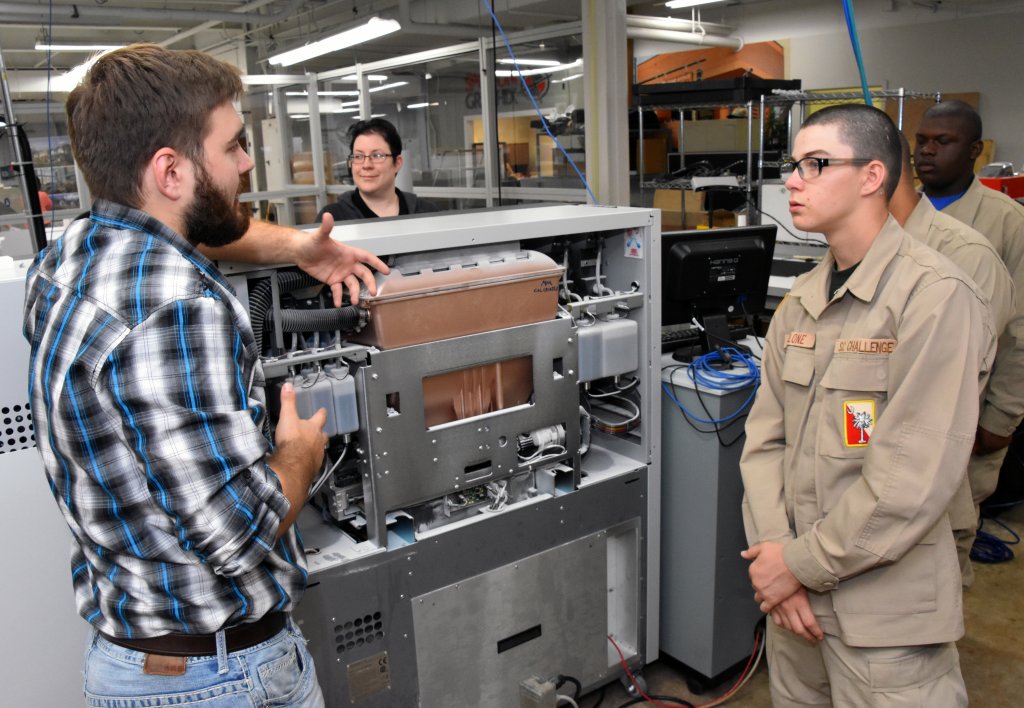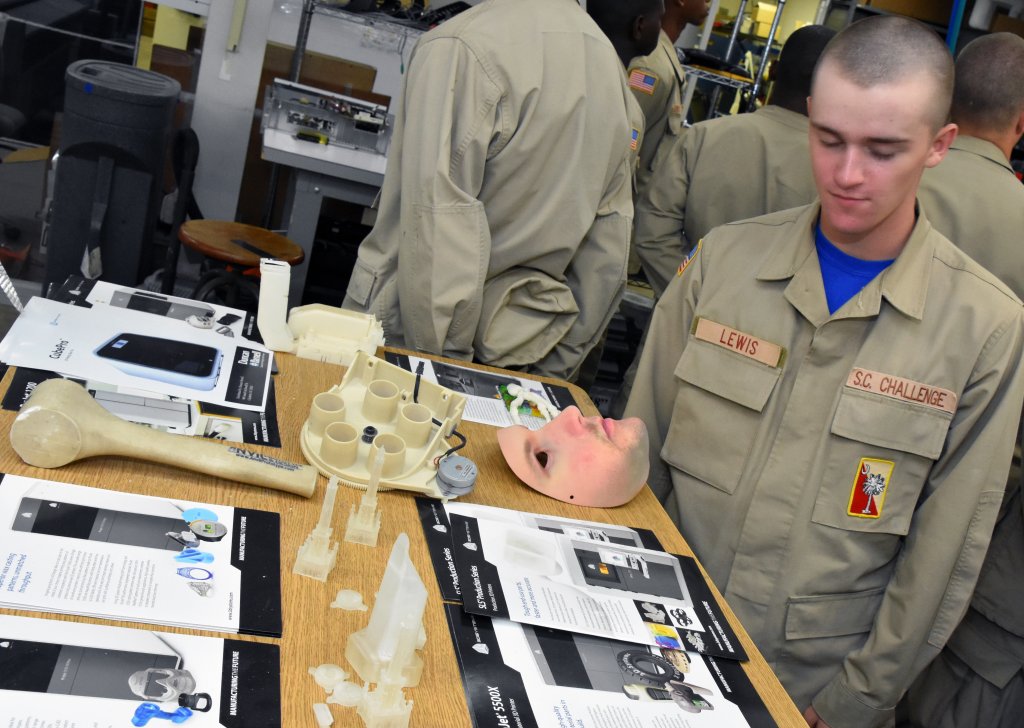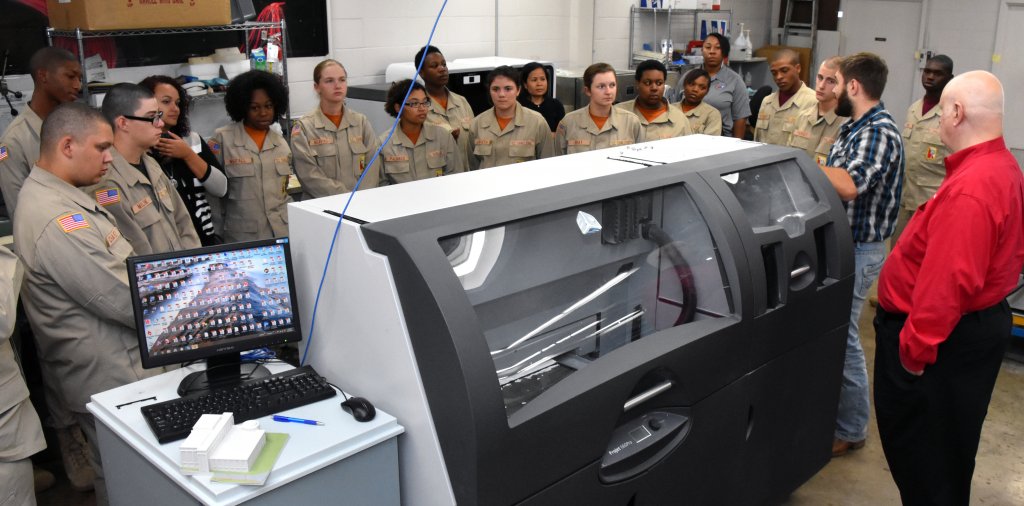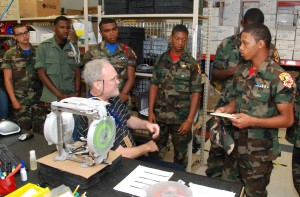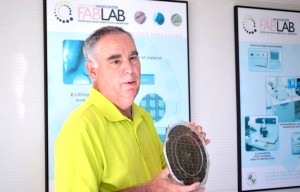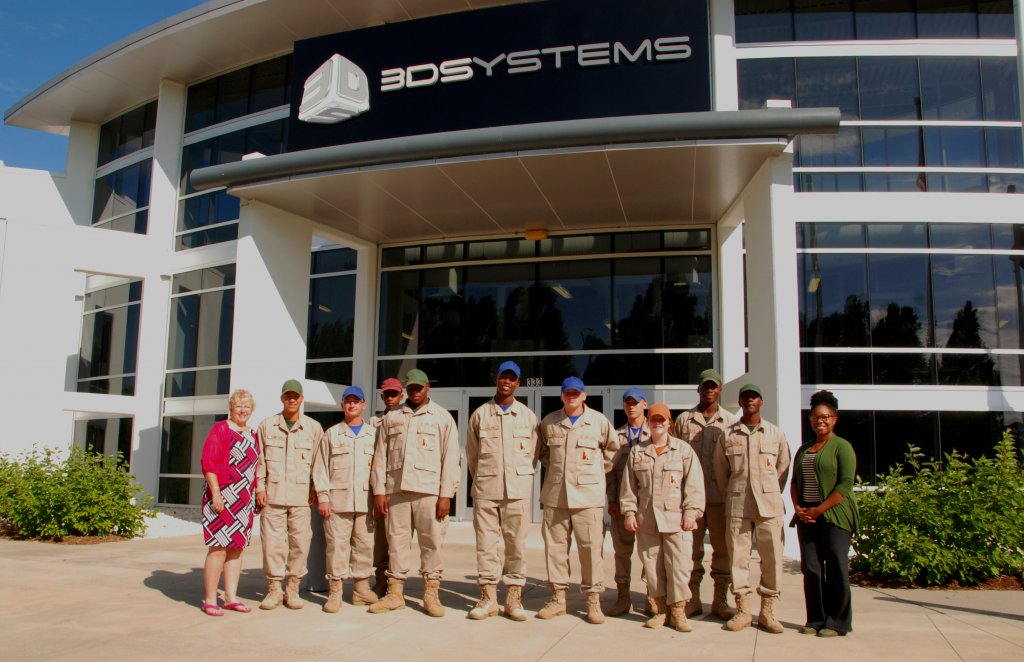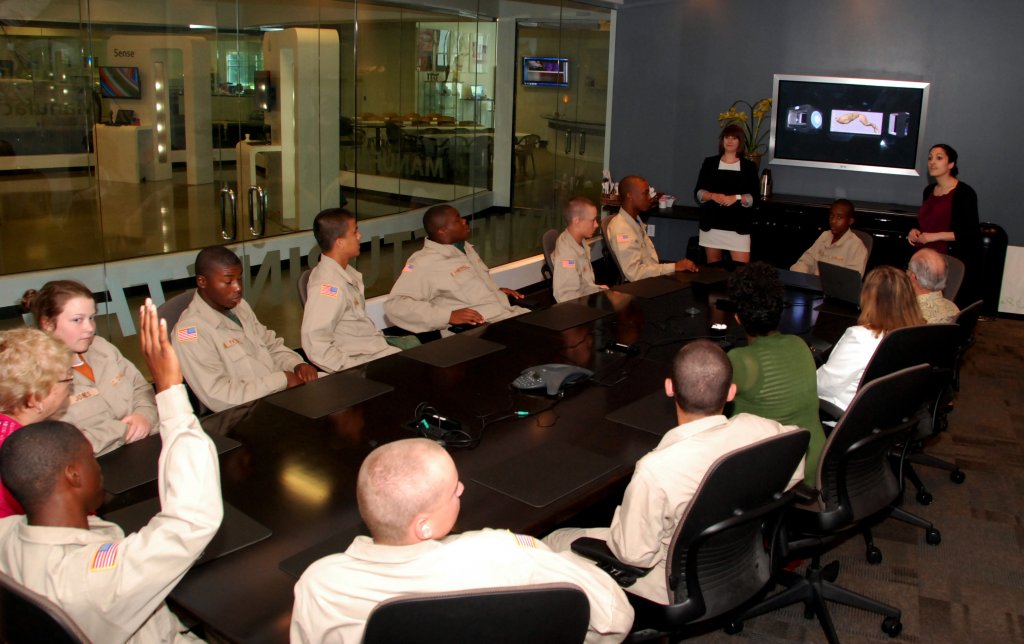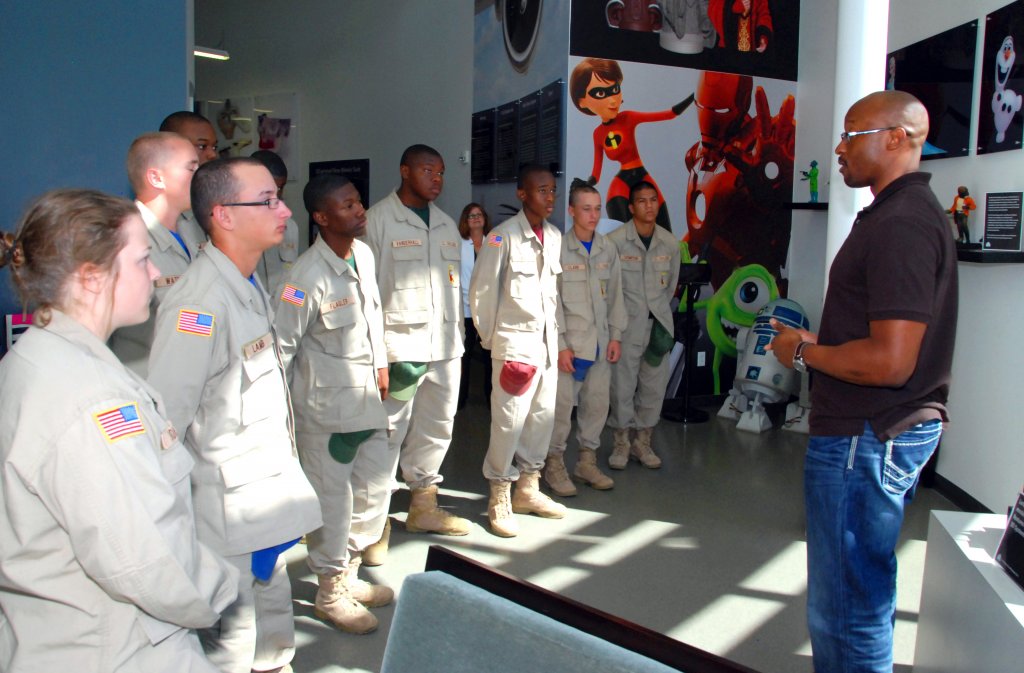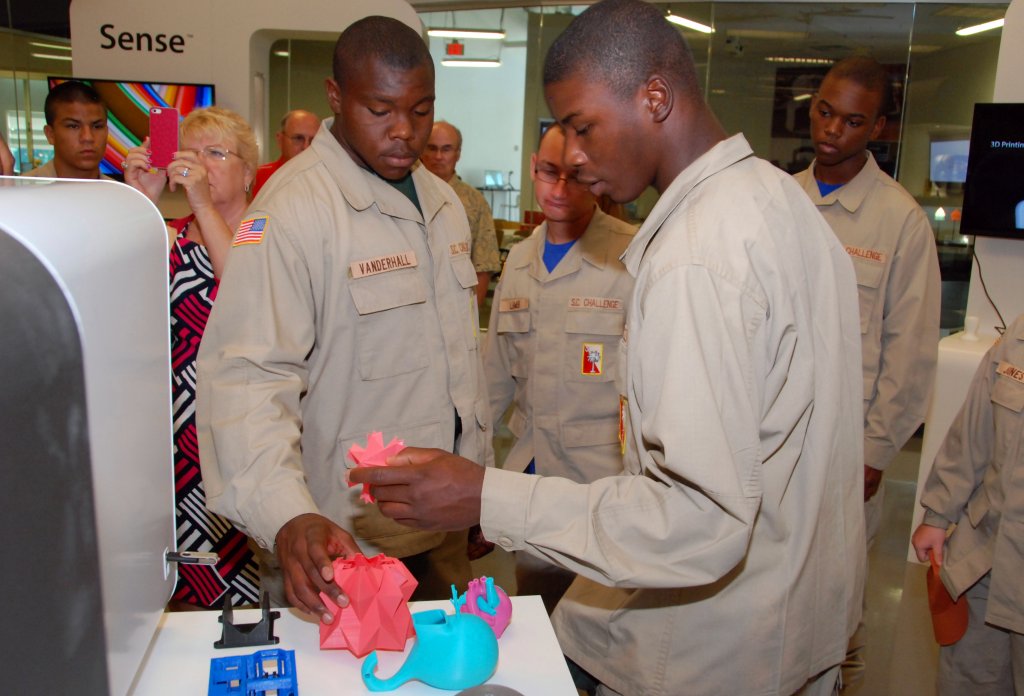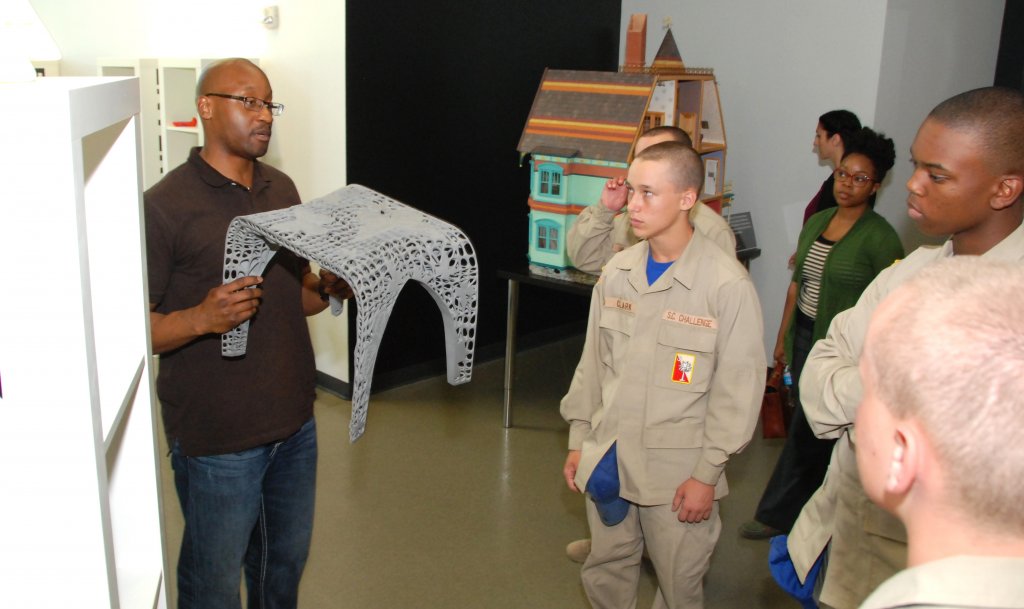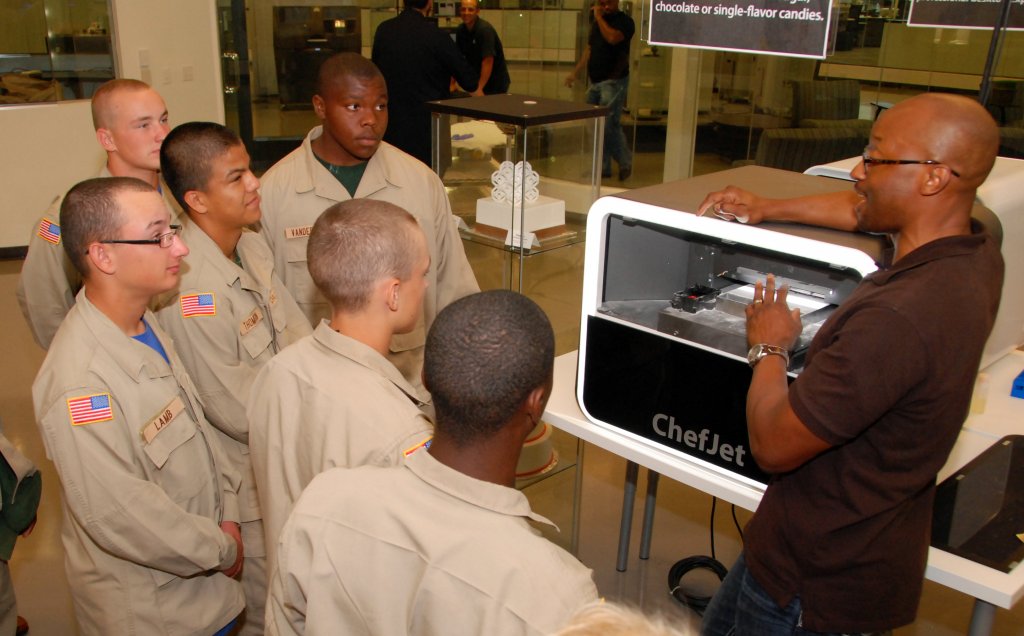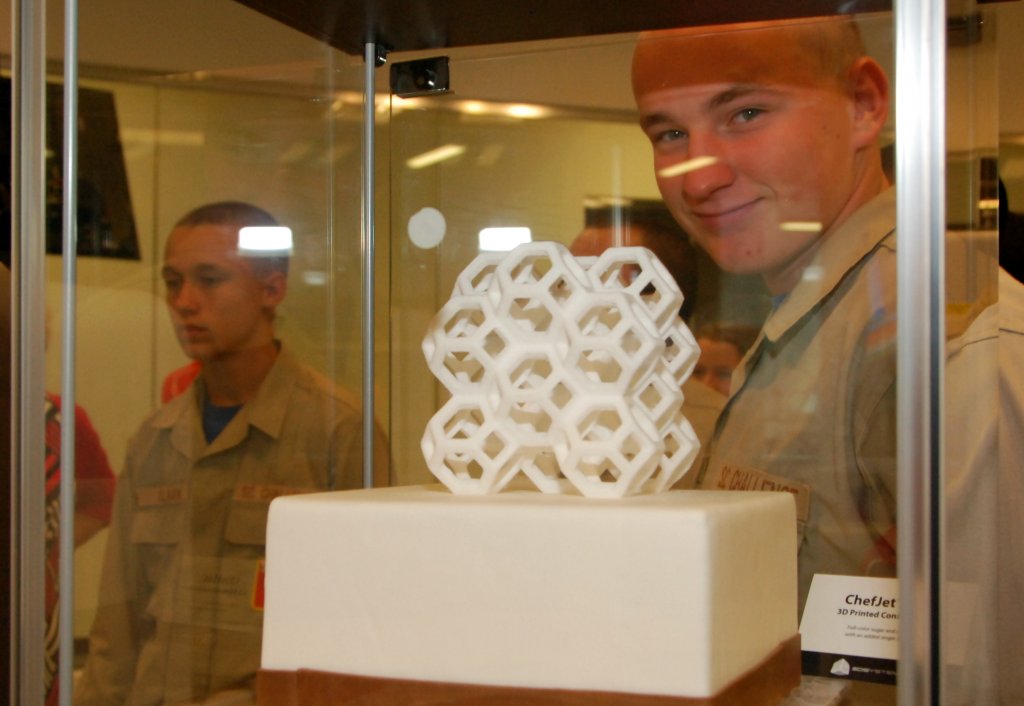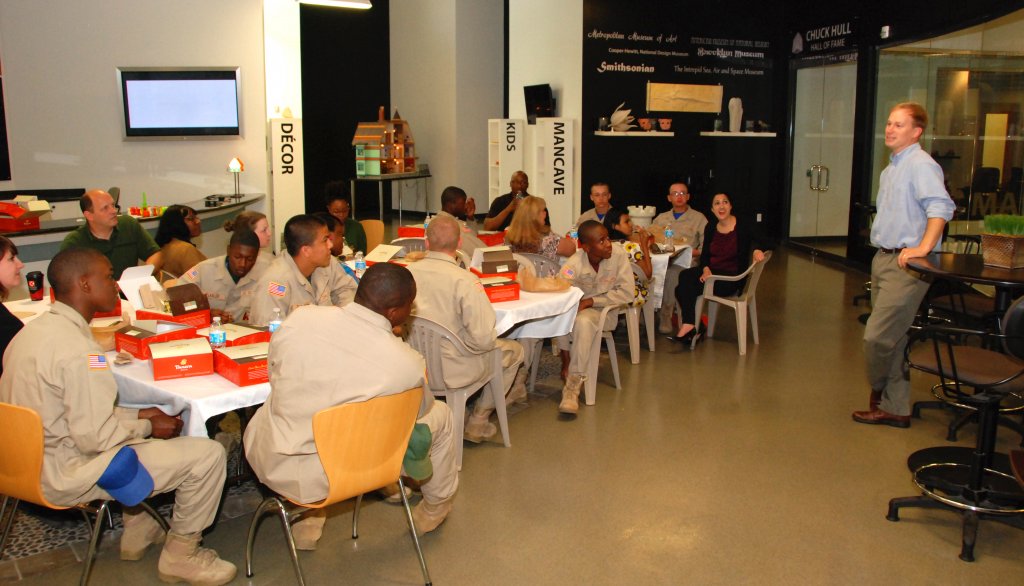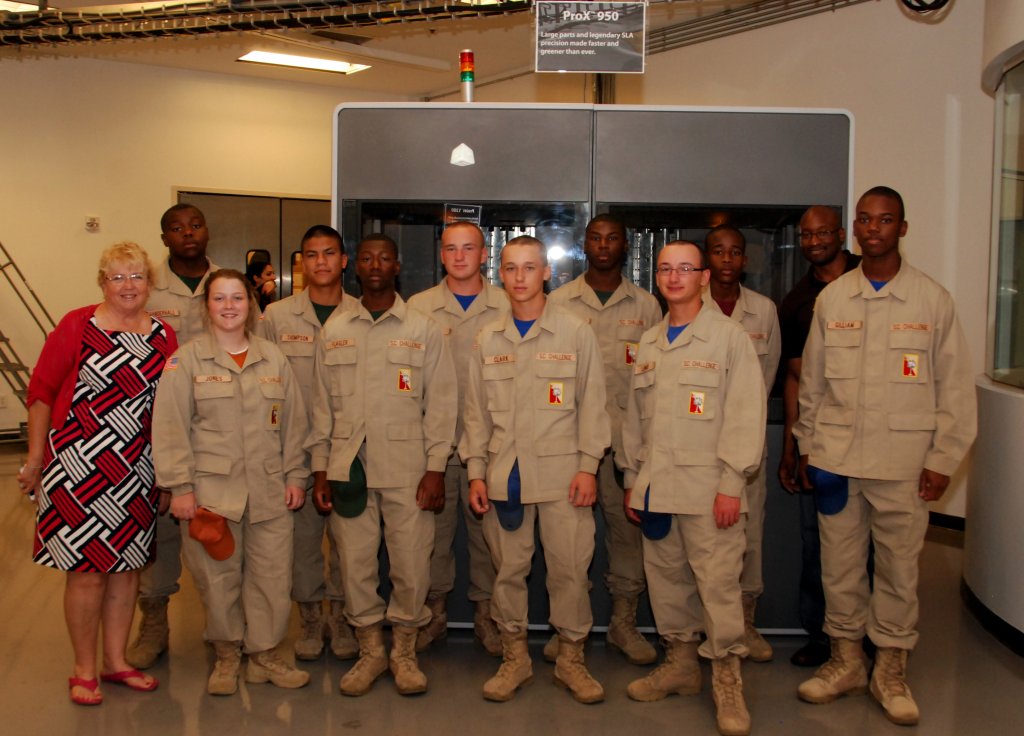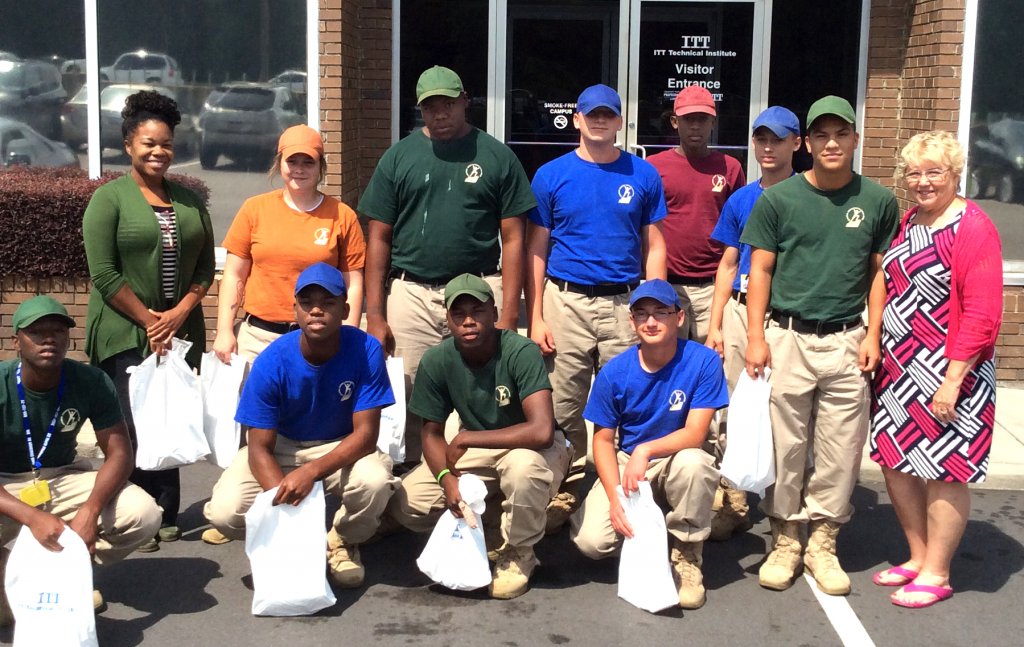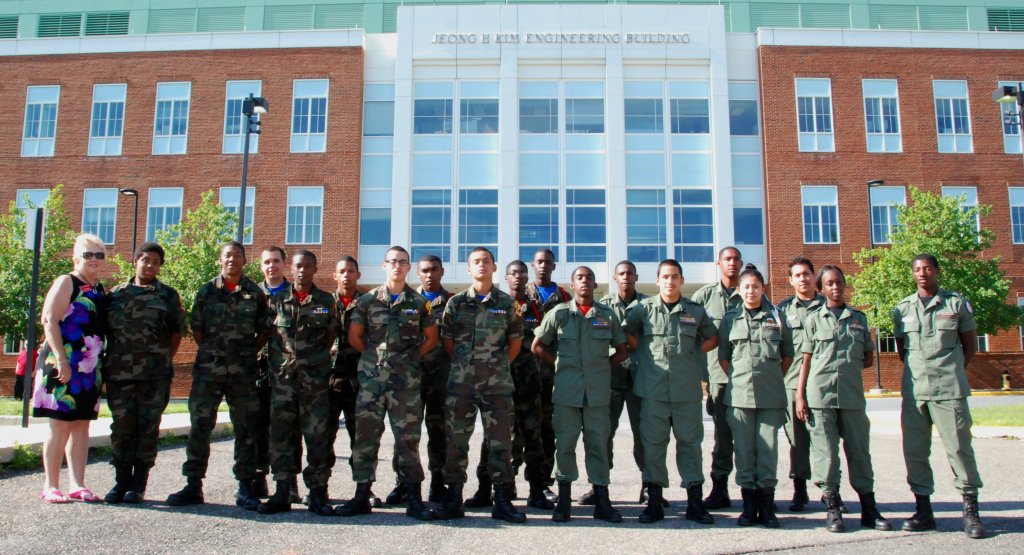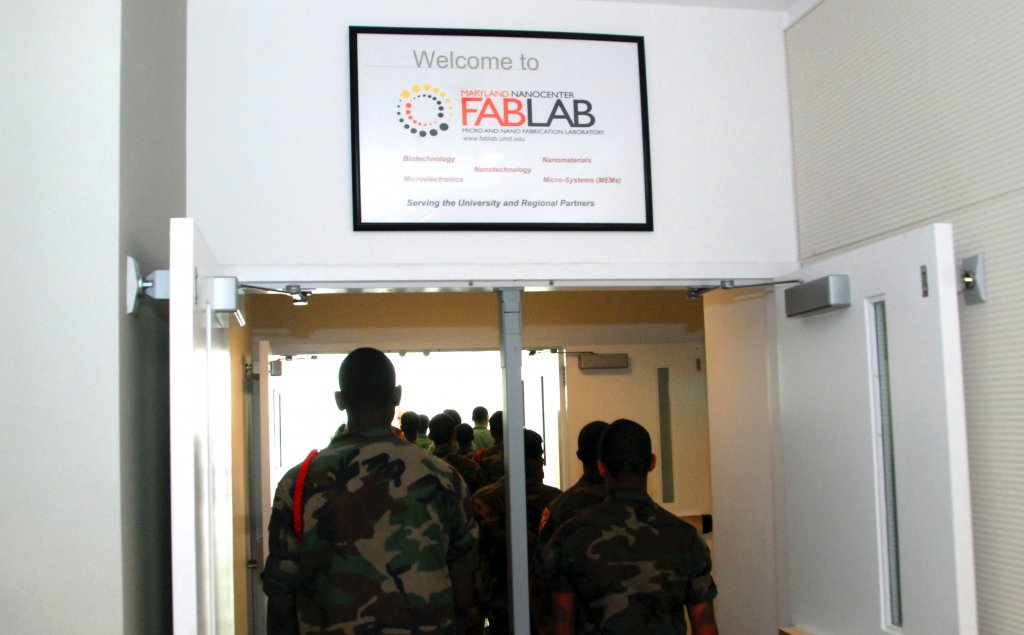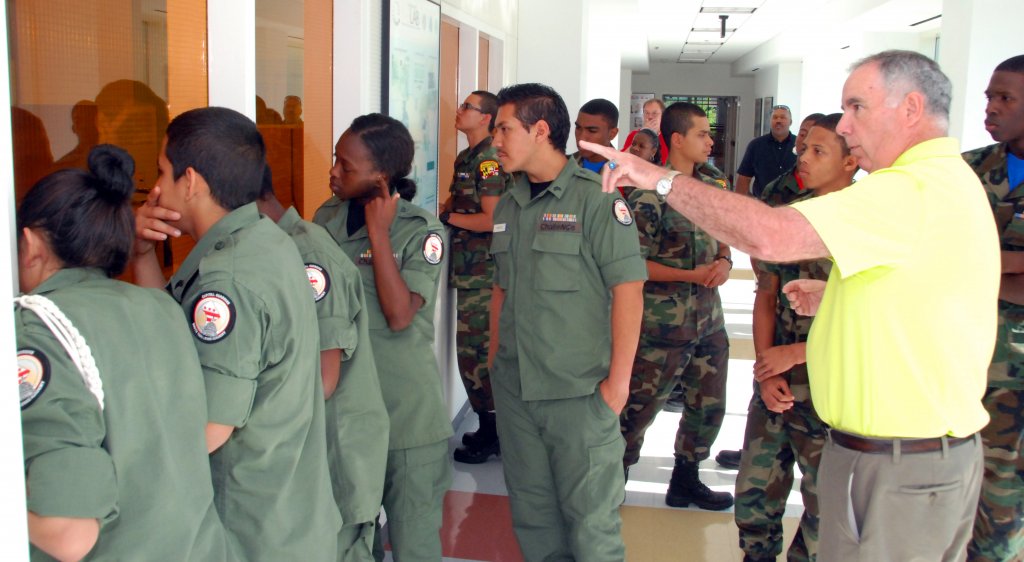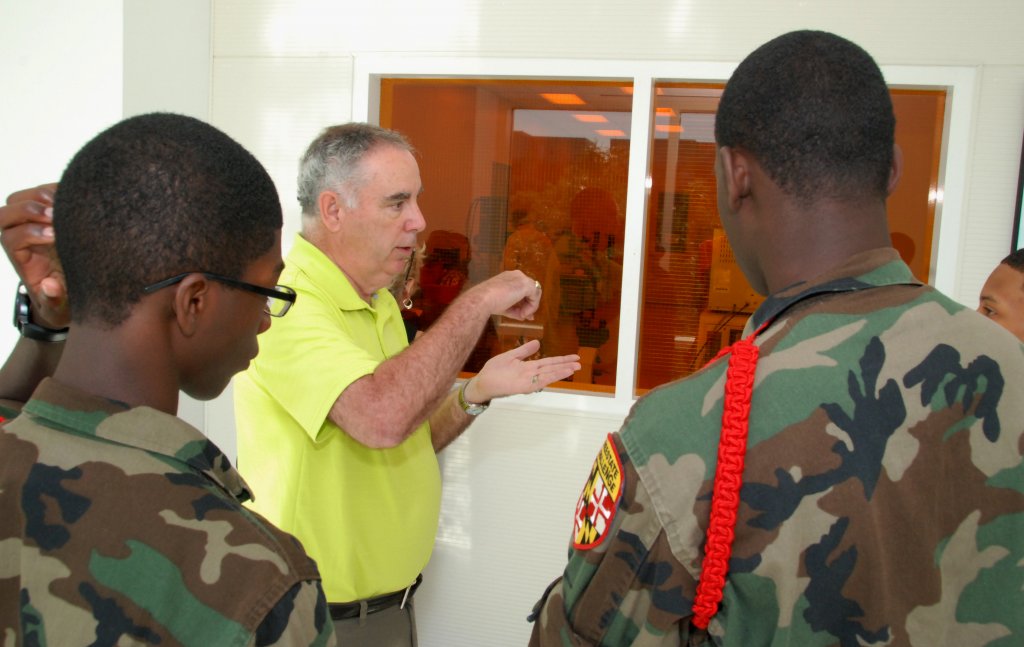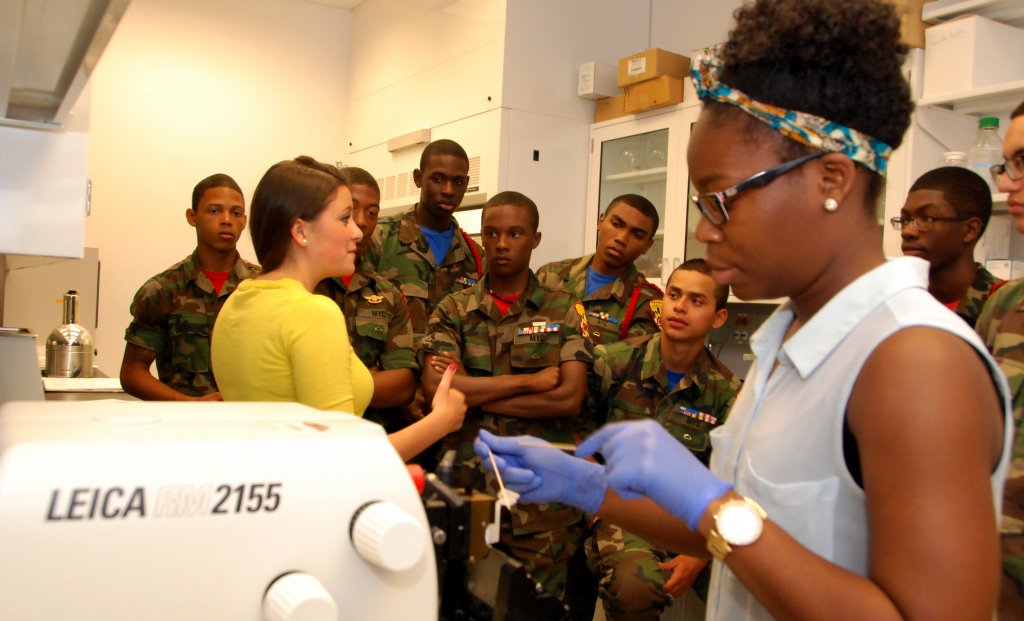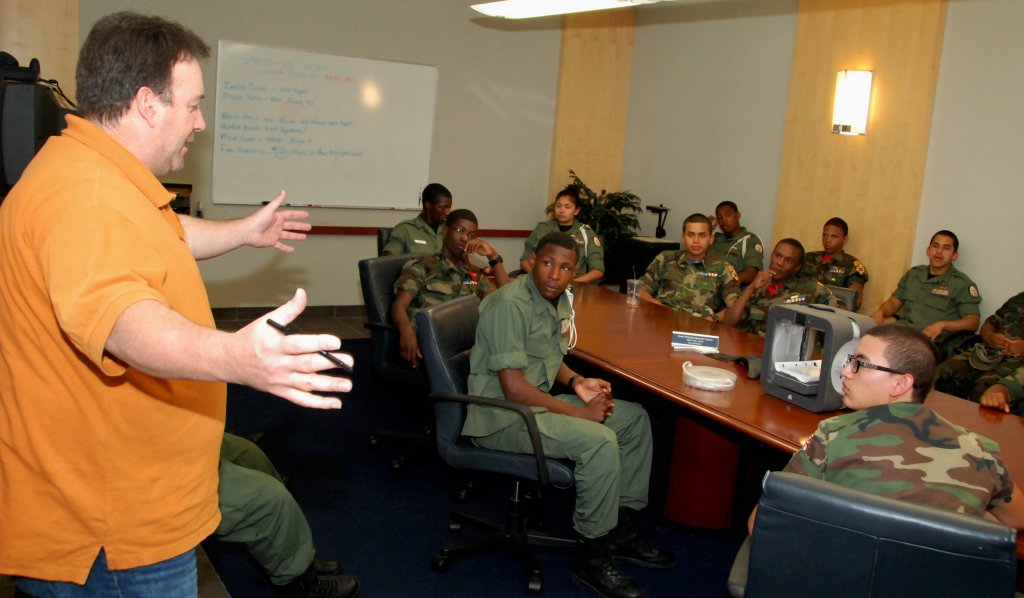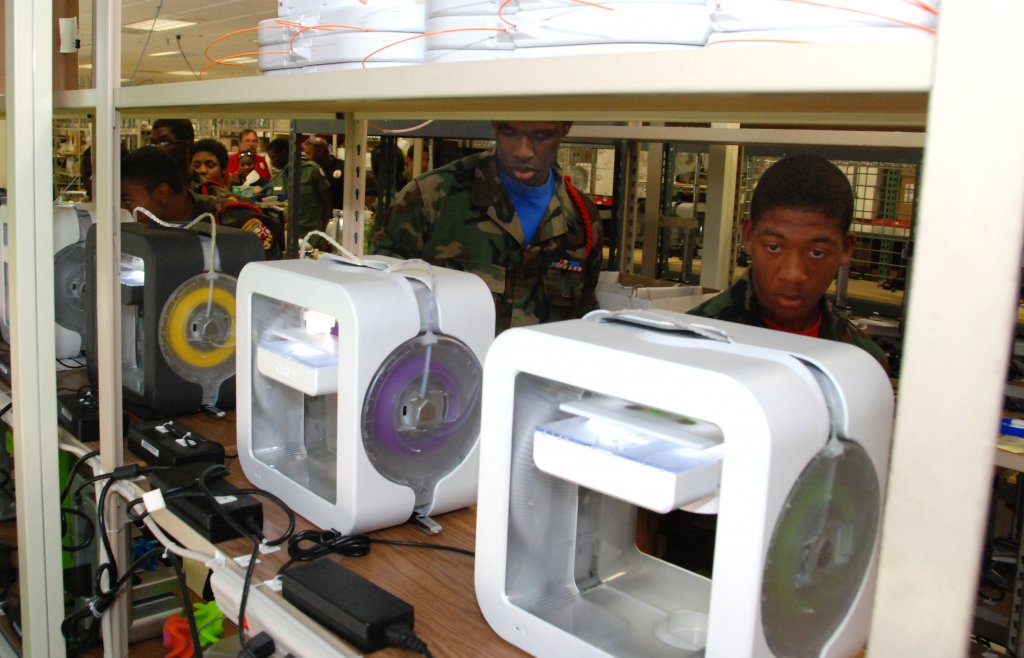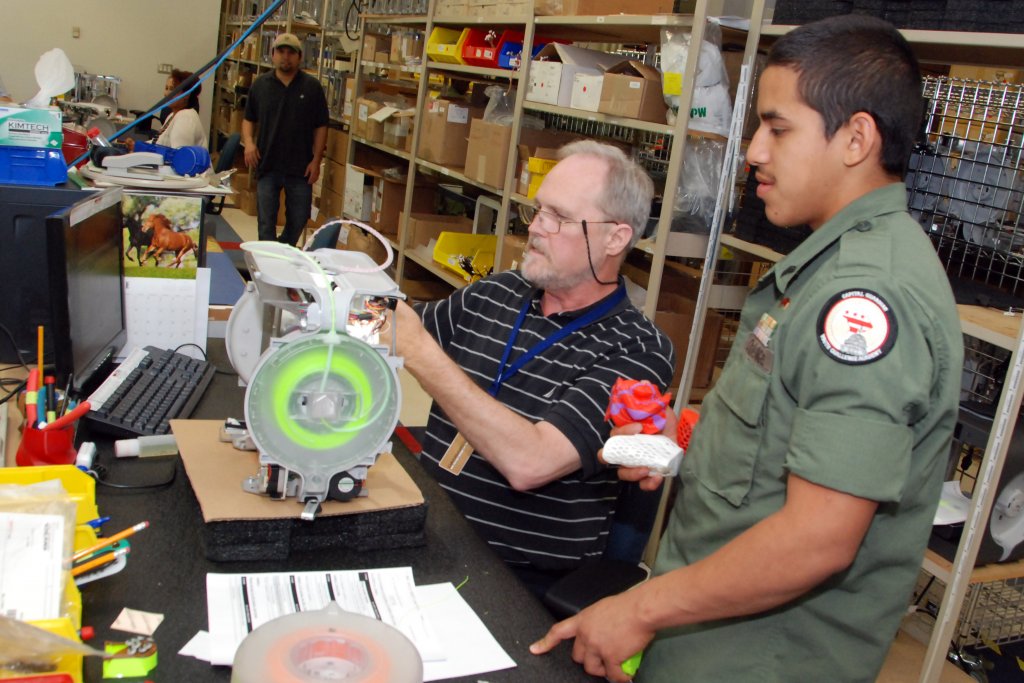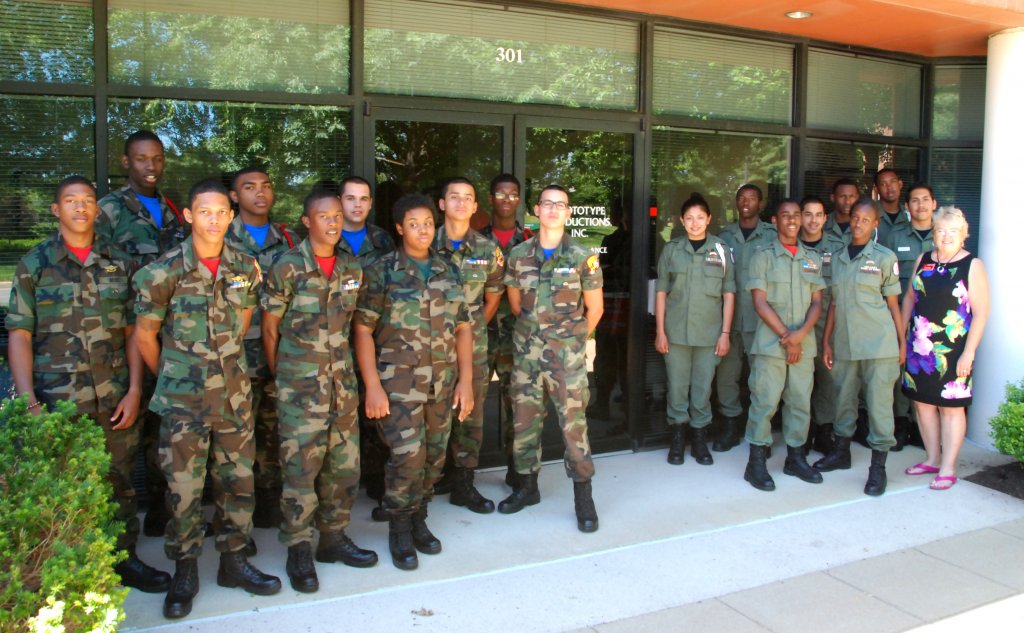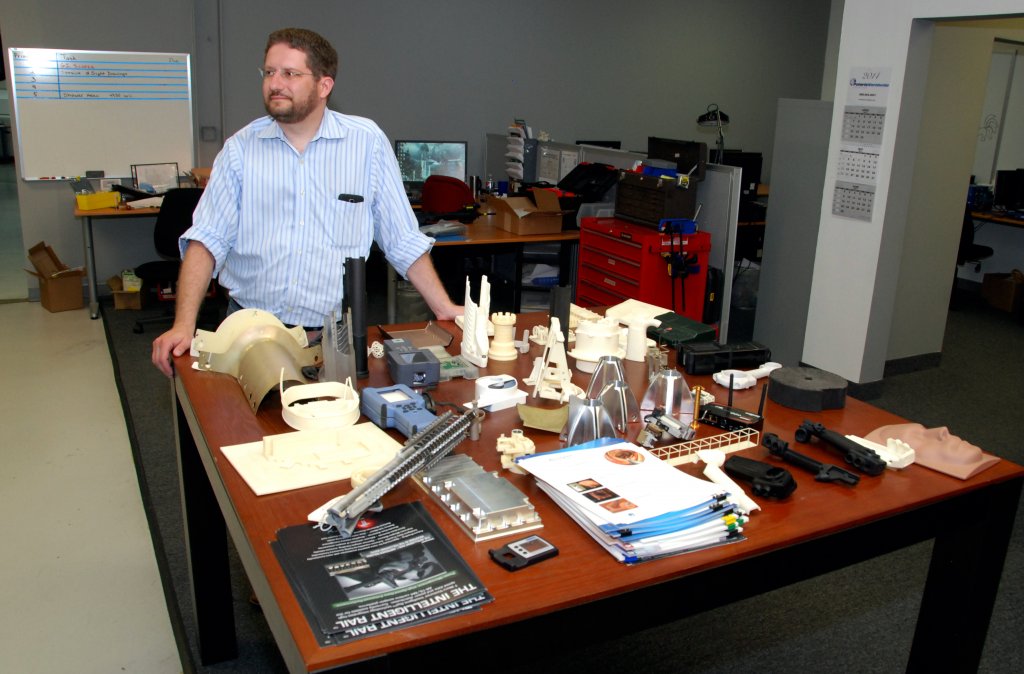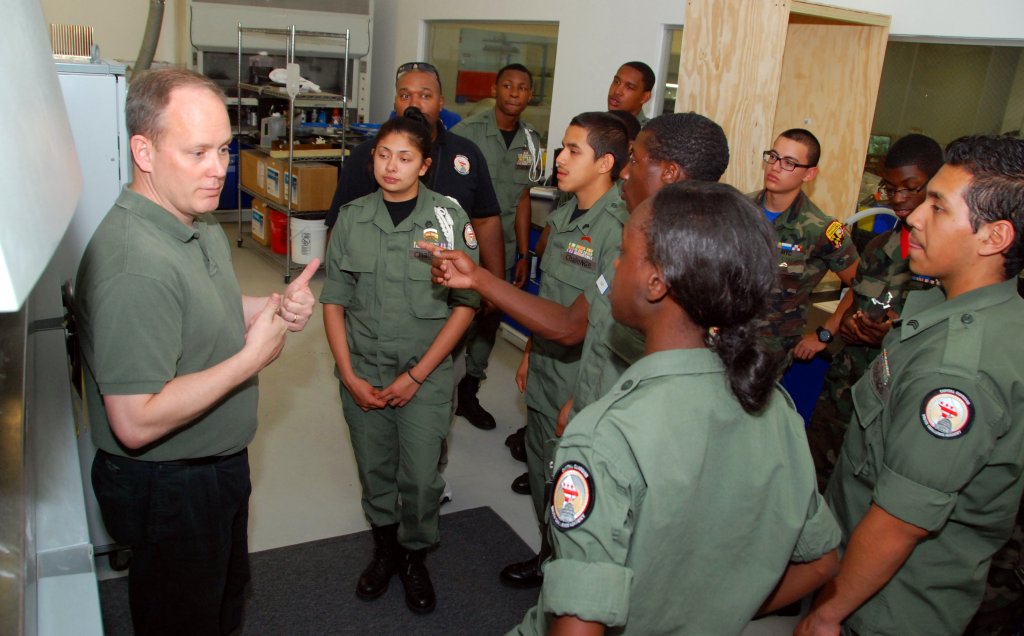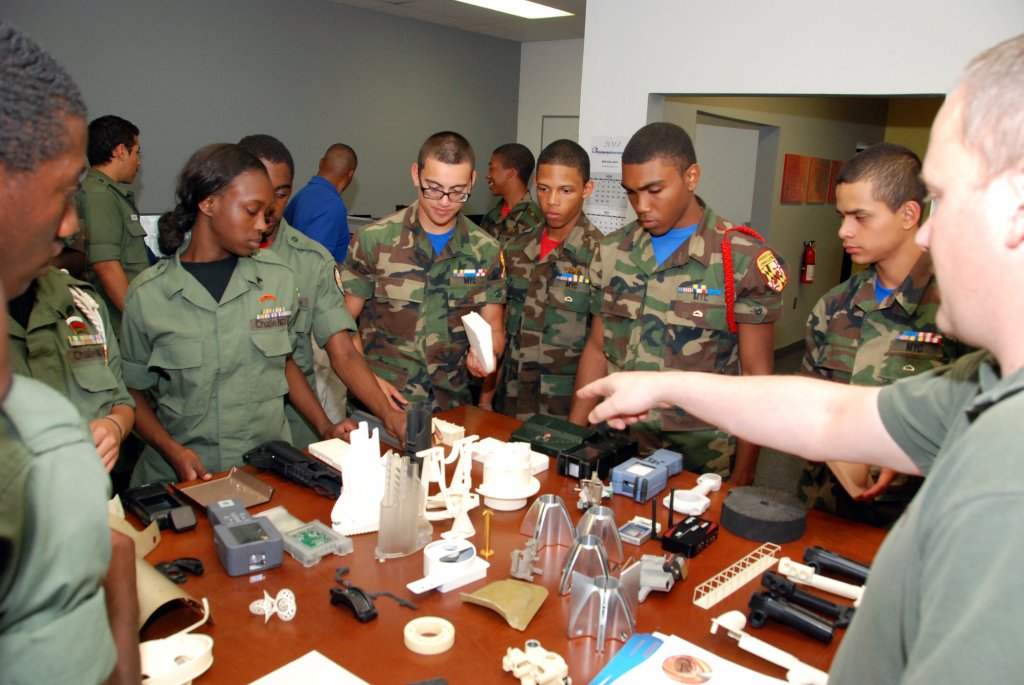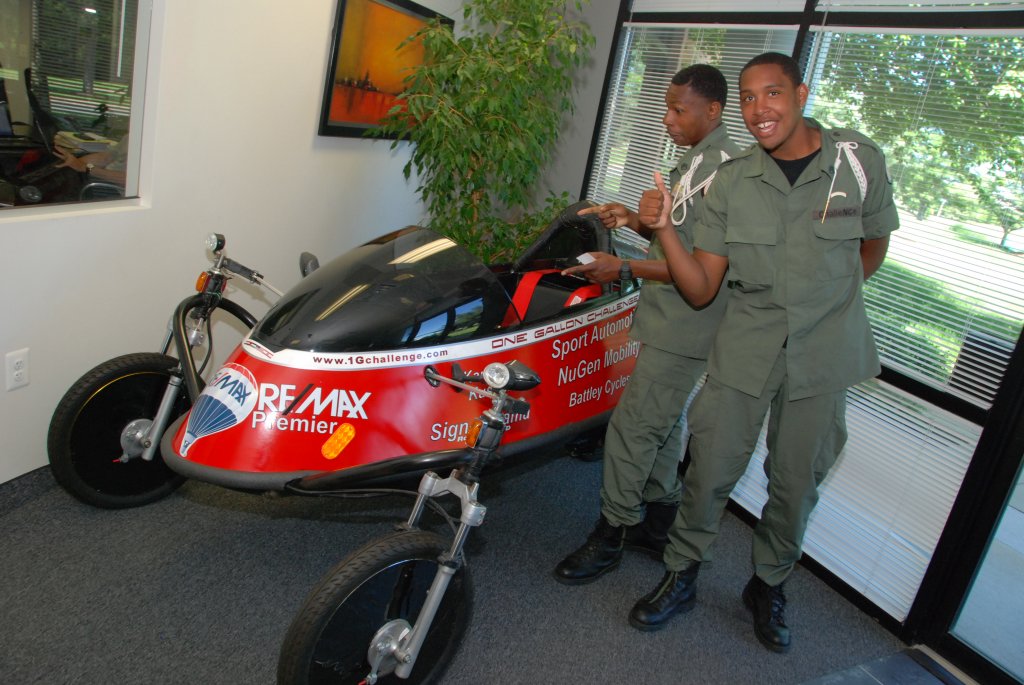Vocational Orientation is an important part of YouthQuest’s 3D ThinkLink Initiative because our program does much more than introduce students to 3D design and printing.
Our goal is to teach at-risk youth to think differently so they can achieve their potential as successful adults. Their brains grow when they are exposed to new things. The more they experience, the more they have to draw on when thinking creatively about solving problems.
Prototype Productions, Inc., our 2015 3D ThinkLink Strategic Partner, teamed up with Topgolf Loudoun this month to provide a valuable Vocational Orientation experience for our students from Maryland’s Freestate ChalleNGe Academy and the District of Columbia’s Capital Guardian Youth ChalleNGe Academy. PPI Co-Founder and CEO Joe Travez organized the October 15 event which focused on innovation.
Innovation in Practice
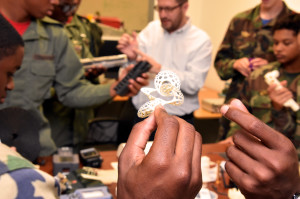
As they toured PPI’s headquarters in Ashburn, Virginia, our 3D ThinkLink students discovered that innovative thinking is at the heart of the design, engineering and production work being done there. “Contemplation and action” is how Joe described it to the Cadets.
Chief Technology Officer Ben Feldman explained the ways PPI uses 3D printing, also known as additive manufacturing, along with traditional subtractive manufacturing methods to solve engineering problems.
For example, our students learned how the powered rail system PPI developed for military rifles not only lightens a soldier’s load by as much as 12 pounds by reducing the number of batteries he must carry, but can also be used for sending and receiving potentially lifesaving information on the battlefield.
Another PPI product they saw is a haptic device that mimics a sense of touch for training medical workers to insert IV needles or catheters into patients. Students selected for our advanced immersion training will get to try 3D modeling using haptic devices we recently added to the 3D ThinkLink Lab.
Visiting PPI showed our students some of the ways the technical knowledge and thinking skills they’re learning in class are applied in the working world. It opened their eyes to career paths they might never have considered.
Applied Innovation
From PPI, the group headed to nearby Topgolf Loudoun for a fun, hands-on lesson about innovation in action.
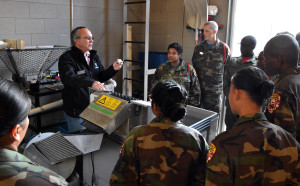
Topgolf puts an imaginative, high-tech spin on the concept of a driving range. The golf balls are embedded with radio frequency identification (RFID) microchips and players try to hit targets in the outfield that are equipped with sensors that read data from the balls. The information is instantly relayed to computers that process the data, tally scores and display the information on players’ monitors.
The three-tiered facility has more than 100 player bays and hundreds of HDTVs, plus big-screen video games and other electronic goodies, all connected to a roomful of computers by miles of cable.
Director of Sales Cassandra Taylor and Facilities Manager Stephen Coffin led a behind-the-scenes tour to explain how everything works. Afterward, the students picked up the clubs and gave it a try. Few of them had ever played golf, but with a little coaching from the Topgolf pros, some of the kids quickly got into the swing of things.
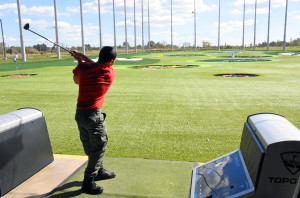
It might have looked like just fun and games, but Topgolf was yet another new experience to stimulate creative thinking.
The Maryland and DC students wrapped up their Vocational Orientation Day by visiting the University of Maryland Tissue Engineering and Biomaterials Lab in College Park to see how researchers are using 3D printing to make medical marvels such as blood vessel grafts and bone replacements.
A week later, 25 Cadets from South Carolina Youth ChalleNGe Academy – our largest 3D ThinkLink class ever – toured 3D Systems in Rock Hill, Duncan-Parnell’s 3D printing division in Charlotte and the University of South Carolina’s Department of Mechanical Engineering in Columbia.
Innovation’s Impact
The young people in ChalleNGe programs used to be turned off to education. For any number of reasons, they dropped out or were kicked out of school. They’ve made a commitment to turn their lives around and we’re helping them turn their brains back on.
Spending a day immersed in innovation can be a profound experience for at-risk children. It inspires them to dream big. It reminds them there’s a wide world of possibilities open to them.
We are grateful to all the companies and schools that provide Vocational Orientation tours for our students. In doing so, they are giving back to the community and investing in tomorrow’s workforce.

